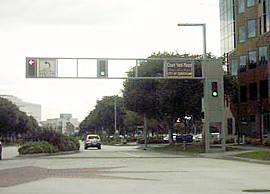 It’s no secret that young drivers are more likely to get involved in an accident compared to older drivers. Many factors likely contribute to this, including experience on the road, but a new study looked into emotions as a potential cause as well.
It’s no secret that young drivers are more likely to get involved in an accident compared to older drivers. Many factors likely contribute to this, including experience on the road, but a new study looked into emotions as a potential cause as well.
The Norwegian Public Roads Administration (NPRA), the Norwegian independent research organization SINTEF, the University of Turku, and the Finnish Directorate of Public Roads (TraFi) wanted to look into this understudied subject when they started the Neurodriving Project in 2012. They wanted to see how different emotions influence young people’s driving behavior, and they found that the lack of self-control makes them more susceptible to aggressive driving and more prone to car crashes.
Researchers gathered 34 drivers between the age of 18 and 24, who agreed to have their brains scanned while playing car racing video games, so that they could investigate the drivers’ brain activity when facing a yellow light while approaching a signalized intersection. They were asked to drive simulated cars through 20 intersections, with scanners recording how their brains react each time they see a yellow traffic light.
The drivers were divided into two groups, with 17 of them considered to be more willing to engage in risky driving behavior, and the other 17 considered as less risk-averse drivers. They could choose between two options when they were met by a yellow light: they could either keep on driving and risk getting hit by another car, or they could choose to stop and wait for the green light.
Those who decided to continue driving and got into a collision, had to wait six seconds before they could proceed, whereas those who chose to wait for the light to turn green, only had to wait three seconds. Since the goal of the whole game was to go through the 20 intersections as fast as possible, researchers expected that many drivers would be willing to take a chance and try and go through intersections while trying to avoid a collision, in an effort to complete the course faster than other participants. As expected, the risk-willing drivers didn’t think too much about the potential consequences they might face if they ran a yellow light, and decided to drive on, motivated by the possibility of defeating other drivers and getting to the finish line ahead of everyone else. Thanks to the brain scanners, researchers saw that there is increased dopamine secretion among those who are willing to take a risk, as they are driven by the thought of being rewarded if they managed to beat other participants.
On the other hand, risk-averse drivers tended to take their time and assess the risk before they made their decision, ultimately choosing to stop and wait for the green light. Researchers also found that adolescents are more likely to take risks because they don’t have the mechanism that helps a person resist the reward system that causes you to make irrational decisions, unlike more mature drivers, who are able to control their emotions and avoid engaging in a risky driving behavior.
Of course, there are limitations to the findings of this study, as it was a game where the goal seems to have rewarded risky behaviour, and perhaps younger drivers are just more competitive in this setting. Nevertheless, it does seem to show that driving experience isn’t just about learning the rules of the road, but is also about developing a behavioural understanding that can help in making quick decisions.